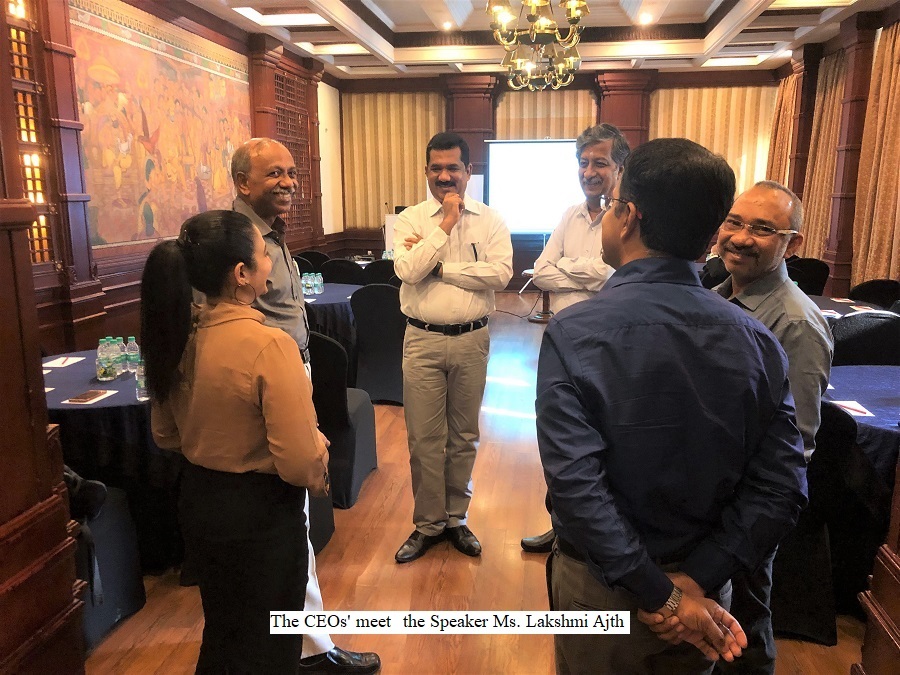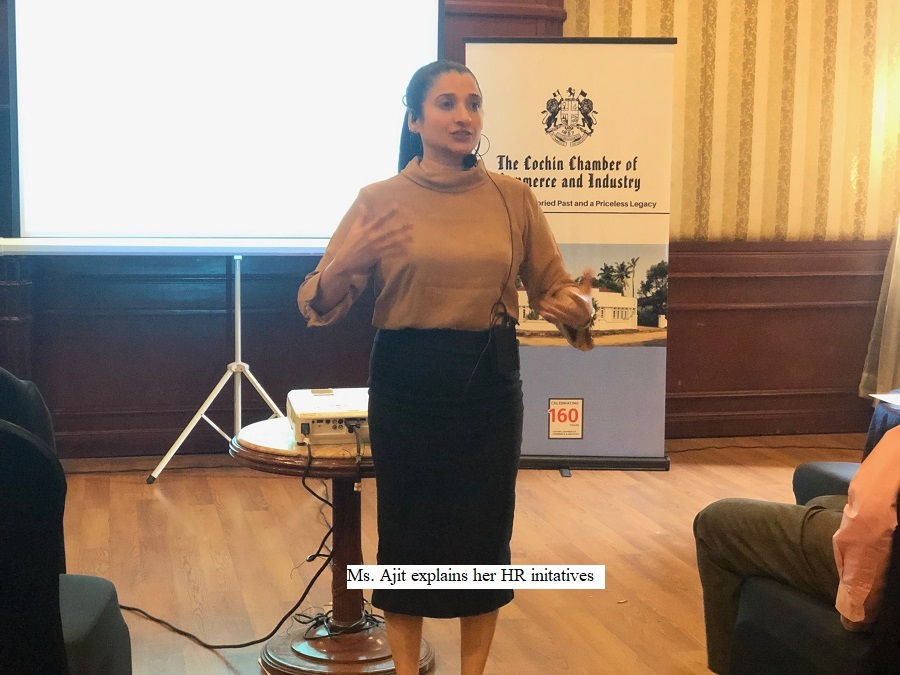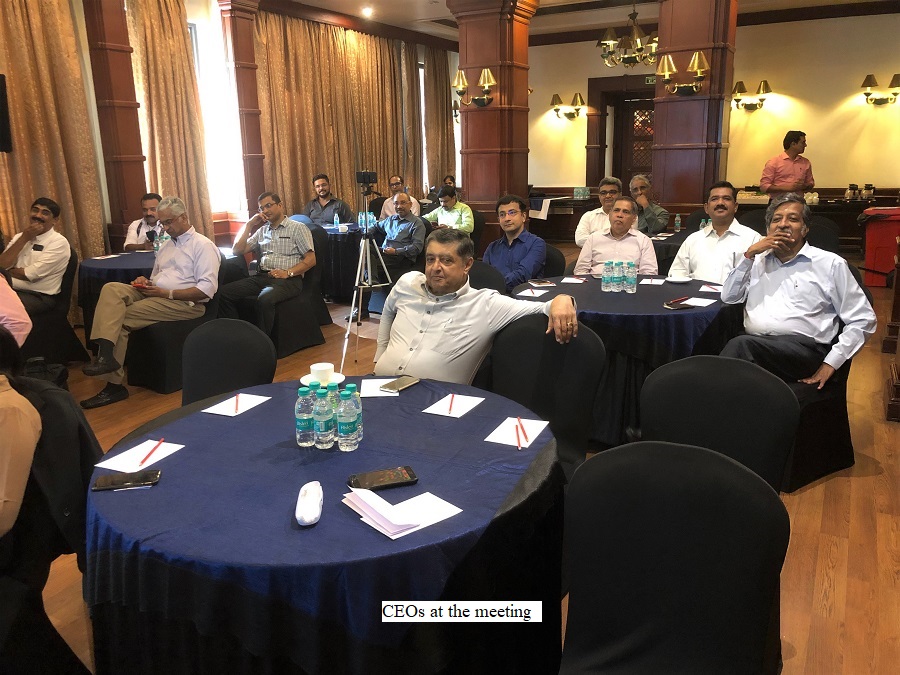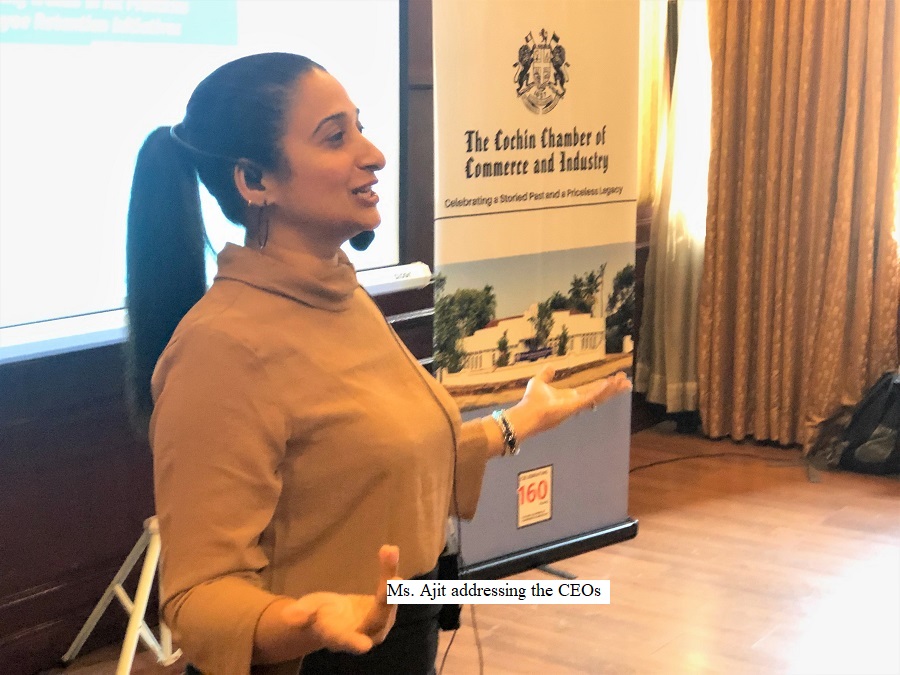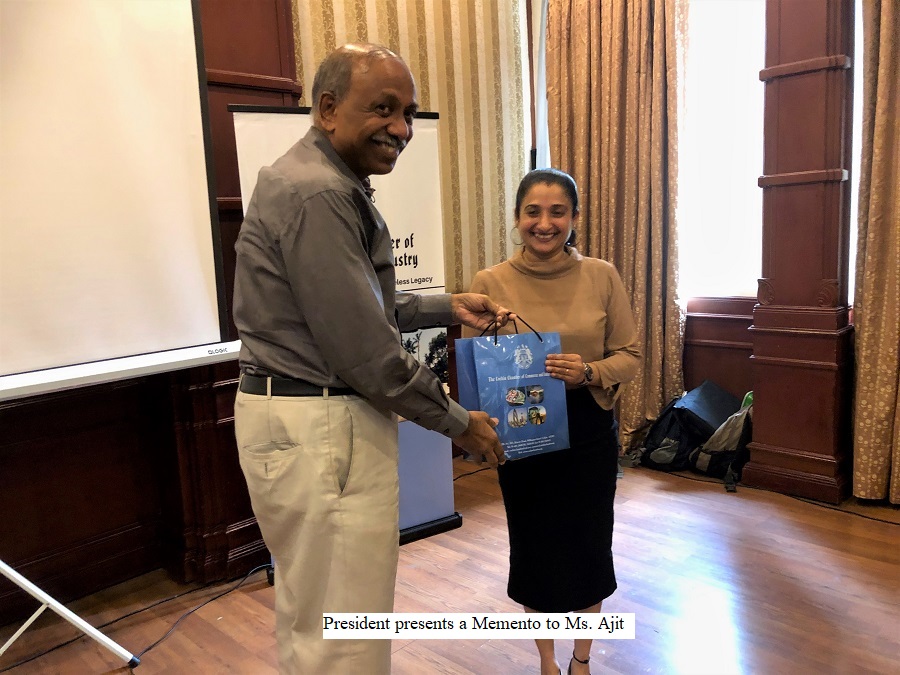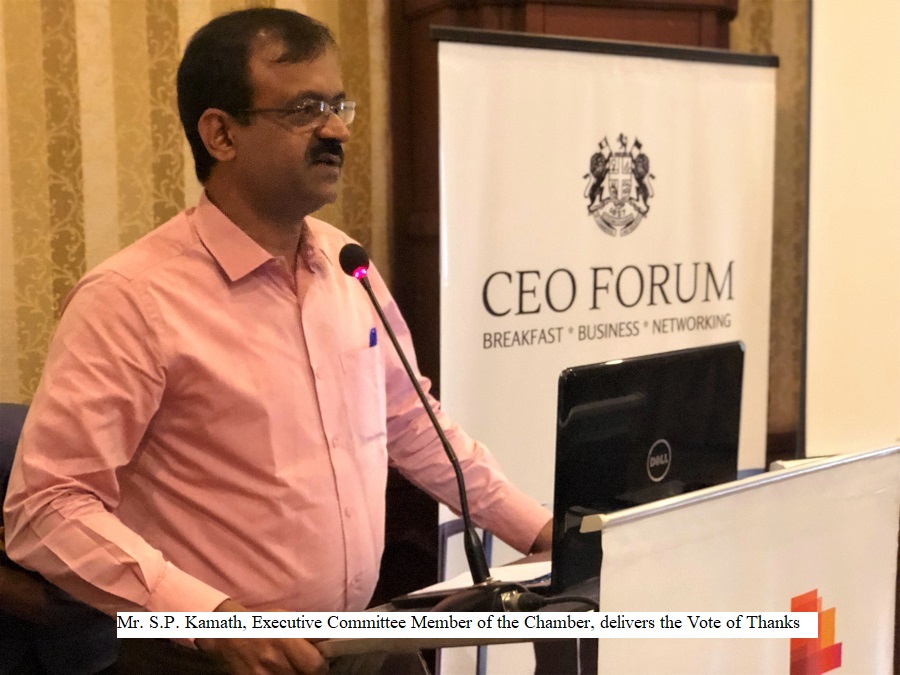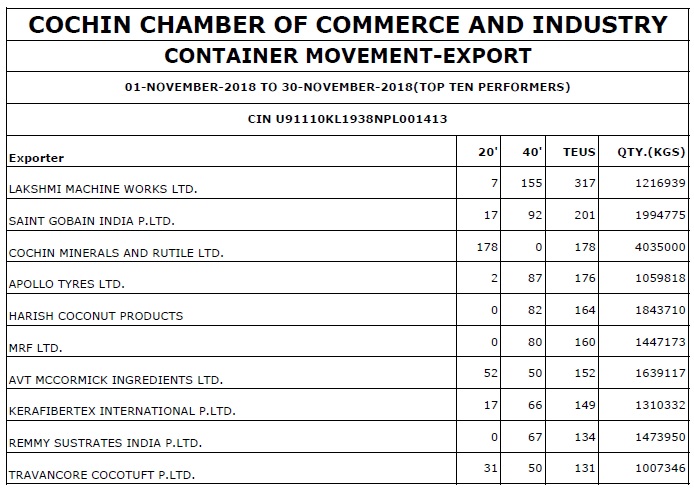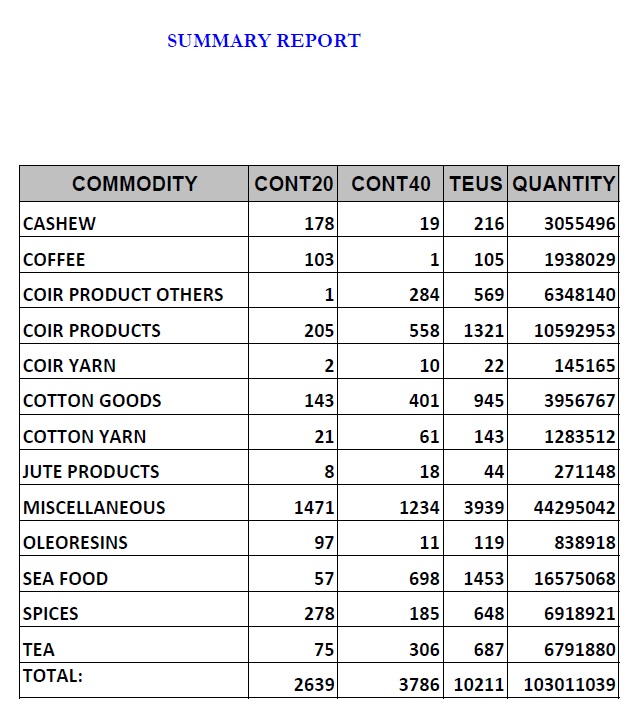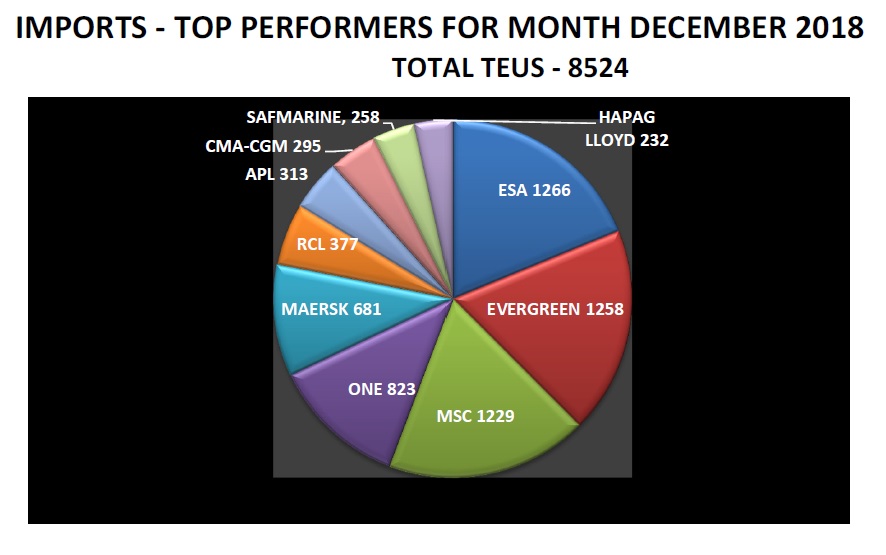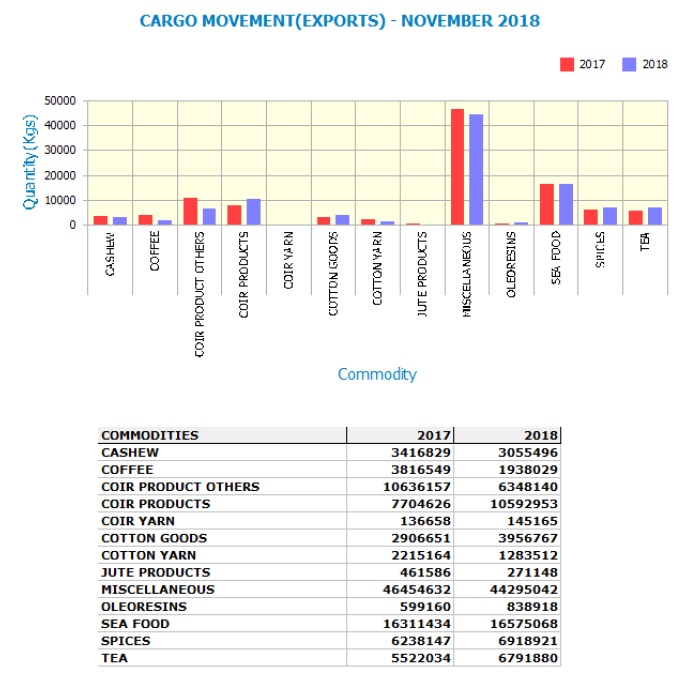President's Note
Dear Friends,
Greetings of the season to you all.
It’s been a very hectic few weeks for us here at the Chamber as we are just a month away from celebrating our 162nd Chamber Day on the 17th of May 2019.
As indicated earlier, Mr. Ashutosh Khajuria, Executive Director & CFO of Federal Bank, Mumbai, will be the Chief Guest on that day and Mr. Marcel R Parker, Chief Mentor, Quess Corp Limited, Mumbai, will be the Guest of Honour. The event will be held at Hotel Monsoon Empress, Palarivattom, Ernakulam from 06.00 p.m onwards. The invitation to the programme will reach you shortly.
I take this opportunity to cordially invite all the members of the Cochin Chamber to this prestigious event the Chamber is organizing.

We propose to make the Chamber Day programme an annual event where all our members can come together as the Chamber family and enjoy an evening together.
This year we will be releasing a Souvenir commemorating the 162 year journey of the Chamber. I have to admit that as the President of the Chamber, it gives me immense pride to be a part of all these events and to be the face of the Chamber.
Earlier this month, we organized the 4th CEO FORUM Breakfast Meeting, as is the practice every month. Ms. Lakshmi Ajit, Director – HR, Eliptico IT Solutions Pvt. Ltd., Hyderabad (iSpace Inc., Enterprise) was the Speaker at the session. She spoke on “Unfolding Trends in HR Practices and Employee Retention Initiatives.” Ms. Lakshmi is an excellent HR Person and an expert on the subject. She spoke on initiatives that the CEOs present at the meeting could easily implement in their organizations to retain and empower their employees. The exercises she explained at the meeting were innovative and worthy of emulation. This is one of the reasons why the CEO FORUM has been growing since we bring in speakers on current topics that are of immediate relevance to business and industry. I urge you all to keep an eye out for all our programmes so that you don’t miss out on any of them.
Coming back to the Souvenir that we plan to release during the Chamber Day Celebration, I request those members who have not as yet registered to be showcased in this book, to immediately get in touch with the Chamber Secretariat. We propose to finalize the matter for the Souvenir by the end of next week and to go in for printing in early May. Therefore, it would be helpful if those of you who are yet to associate with this project, can get in touch with the Chamber Secretariat in this regard at the earliest.
Wishing you and your family the very best and seeking your continued support and cooperation.
Regards
Venugopal
Quote


Fine Points

Recent Event
CEO FORUM Breakfast Meeting
“Unfolding Trends in HR Practices and Employee Retention Initiatives.” | 05.04.2019
The Cochin Chamber of Commerce and Industry conducted the CEO Forum’s – 4th Breakfast Meeting on Friday, 5th April 2019 at the Taj Gateway Hotel, Ernakulam. The Guest Speaker at the meeting was Ms. Lakshmi Ajit, Director – HR, Eliptico IT Solutions Pvt. Ltd., Hyderabad (iSpace Inc., Enterprise).
Mr. V Venugopal, President of the Chamber, delivered the Welcome Address and introduced the Speaker of the day.
Ms. Ajit’s talk was on “Unfolding Trends in HR Practices and Employee Retention Initiatives”
In her talk, Ms. Ajit spoke about Smart Data and Rebooting HR, how Block chain is used for candidate background checks and the use of gaming designs in order to make the learning more engaging.
Ms. Ajit explained the embedding of HR tools with machine learning to streamline the HR processes and the improving employee experience. She also spoke about a two-way bridge between the scientific research and actual HR practices called the ‘HR Innovation Lab.’
Ms. Ajit explained in detail various employee retention initiatives like offering an attractive compensation package, starting a learning club, creating a conducive work environment, ensuring effective communication between staff, banning emails for a day etc. She also mentioned that conducting regular health check-ups for the employees, creating a social impact by encouraging volunteering, providing recognition and rewards to the employees etc. could help companies to retain their top talent.
Mr. V Venugopal presented a Memento to Ms. Lakshmi Ajit.
Mr. S P Kamath, Executive Committee Member, proposed the Vote of Thanks.
The interactive session concluded by 10 a.m with breakfast.
Résumé Portal
The Cochin Chamber of Commerce & Industry is pleased to announce that it now has a ‘Résumé Portal’ for freshers and others who are seeking jobs.
The Resume Portal of the Chamber is an initiative to help students find jobs in today’s highly competitive market. While we do not guarantee jobs for those who upload their résumés on the portal we will ensure that your résumé reaches the widest possible audience for their consideration.
The résumé/application you submit will undergo a strict scrutiny process following which, if accepted, it will be hosted on our portal. The acceptance or rejection of your résumé will solely be the Chamber’s prerogative based on various selection criteria.
Click here to submit your resume

Article
ELIGIBILITY TO EMPLOYABILITY
A Write up for employment seekers, employment providers and educators.

Mark Antony Sequeira
“Wisdom is in knowing what to do, Skill is in knowing how to do it and Virtue is in doing it and doing it well indeed”
-David Starr Jordan.
The 10 Most Important Skills to be Developed that will Make People Employable
- Attitude / Behavioural skills
- Communication skills
- Leadership skills
- Management skills
- Human Relations skills
- Innovation and Creativity
- Tech skills
- Time Management skills
- Sales / Marketing skills
- Stress Handling skills
“The ABC’s are Attitude, Behavior and Communication skills”, Gerald Chertavian
What is employability?
The UK Commission for Employment and Skills (UKCES) gives the simplest definition of employability in terms of skills: ‘the skills almost everyone needs to do almost any job‘. This is a good definition, although employability is not just about skills, it’s also about capabilities or competencies: aptitude, attitude and behaviour.
Employability is not the same as subject knowledge, qualifications or specialist experience. A brilliant degree, a PhD on the CV may not be enough to secure a position. One must be aware of what employers are looking for in any employee and to demonstrate that one is employable as a person, a team member and as a contributing member of the employer’s organization.
Often, the problem is not that jobseekers in all sectors don’t have employability skills and capabilities, but with so much emphasis on qualifications, particularly in the academic world, they are taken for granted, overlooked or dismissed.
Here is one such example.
Case
Robinson had applied for a post-doctorate industrial research position, ideal for him, that he thought he was guaranteed to get. His CV perfectly matched the job description and academic requirements, so he had not been surprised to be called for interview. He saw it as a formality. He was upset that he did not get through to the second interview stage. When he phoned the company’s HR department to get a feedback, he was told that although the interviewing panel had been impressed with his subject knowledge, they had commented that he seemed non-committal, lacking in enthusiasm and that they were ‘concerned that he would not engage’ with his colleagues or the company. Shocked, Robinson talked it through with a good friend. It hadn’t occurred to him that the interview was about anything but his academic qualifications. He began to understand why the interviewers had thought him lacking in enthusiasm. He had been focusing on answering the questions carefully, so he may have come across as withdrawn or even diffident and aloof. He hadn’t asked any questions about the company, the role or the team he would be working with.
Why is Employability Important?
In a survey on employability skills conducted by the Times of India a few months ago, Indian companies who employed fresh graduates were asked to rate the importance of employability skills against specific technical or academic qualification and skills associated with their degree:
- 45% said employability skills were much more important than academic qualification
- 28% said that they were slightly more important than academic qualification
- 25% said both employability skills and academic qualification were equally important.
- 2% said that employability skills were not as important as educational qualification.
So, what are employability skills and capabilities?
Personal attributes
- A Positive Attitude: a ‘Can Do’ approach, good work ethic and willingness to learn
- Good Personal habits
- Honesty and Integrity
- Reliability or in today’s terminology – the ‘Dependability Factor’
- Time Consciousness
- Team working abilities, collaboration and co-operation
- Adaptability
Skills - Communication – oral and written
- Analytical ability
- Computer literacy / IT skills.How can one develop employability skills?
The best ways to develop employability skills and qualities is through well-structured training and to be employed – any kind of employment will do. No employment is ever a waste of time. In the end, ask yourself very honestly ‘would I employ me?’…………You’ve got the answer.
How can leaders contribute to enhancing the employability quotient of people?
Technical know-how is all well and good, but it is emotional intelligence, a sense of balance or maturity and self-awareness that will make the difference. As a professional management training and consulting organization, we at Maestro Human Resources have learned that although personality cannot be entirely taught, effective training and sustained development can most certainly help people recognize and understand their own emotions and more importantly, the effect they have on others which translates into overall effectiveness of the team, department and organization as a whole. This is where the role of a competent leader becomes crucial.
“There are good leaders who actively guide and bad leaders who actively misguide. Hence, leadership is about persuasion, presentation and people skills”. Shiv Khera
The essence of Leadership is in inspiring people to do something in such a way that the people felt they did it themselves. True leadership is a discovery of potential leaders and then harnessing their abilities through timely, regular and qualitative interventions. Ultimately, the goal of any good L&D exercise is to affect a transition of people’s attitudes, abilities and skills from where they are at present to where they need to get to in the future.
To conclude with excerpts from an article in the Harvard Business Review attributed to Daniel Goleman, the five abilities that distinguish the best leaders with the most recognizable employability skills from the average ones are, and let’s introspect whether we have it too:
- Self-awareness
- Self-regulation
- Motivation
- Empathy
- Social skills
“Change is the law of life, and those who only look to the past or the present are certain to miss the future”. John F. Kennedy.

Forthcoming Events
CEO FORUM Breakfast Meeting
"Digitisation of Labour Law Compliance - A Paradigm Shift" | 03.05.2019

The 5th Breakfast Meeting under the aegis of the Chamber’s CEO FORUM 2019 will be held on Friday, the 3rd of May 2019 between 8.00 am and 10.00 am at the Anchor Hall, Taj Gateway Hotel, Marine Drive, Ernakulam.
The Speaker at this Session will be Mr. Madhu Damodaran, Business Head, CoAchieve Solutions Pvt. Ltd., Bangalore who will speak on “Digitisation of Labour Law Compliance – A Paradigm Shift.”
Click Here to register
Manu Varghese: 9895676827
Thomas Sebastian: 9744629992
162nd Chamber Day Celebrations
Friday, 17th May, 2019 | Hotel Monsoon Empress, Palarivattom

The Chamber will be celebrating its 162nd Chamber Day on Friday, the 17th of May 2019. The event will be held in the evening of that day at the Hotel Monsoon Empress, N H Bypass, Palarivattom, Cochin-25.
Mr. Ashutosh Khajuria, Executive Director & CFO, Federal Bank Ltd., Mumbai, will be the Chief Guest on this occasion and Mr. Marcel R Parker, Chief Mentor, Quess Corp Limited, Mumbai, will be the Guest of Honour.
On this occasion, we will be releasing a Souvenir commemorating the Chamber’s ‘storied past and priceless legacy.’
We will also be honouring the Past Presidents of the Cochin Chamber that evening.
Our newest Members
- Messrs. Menon & Pai, Advocates,
COCHIN
- Digital Core Technologies Pvt. Ltd.,
COCHIN
- Penver Products Ltd.,
ALAPPUZHA
- Kaaizeen Meditech Pvt. Ltd.,
COCHIN
- Altacit Global,
COCHIN
- PEMS Engineering Consultants Pvt. Ltd. (PEMS),
COCHIN
- Messrs. Price Waterhouse Coopers Pvt. Ltd.
BANGALORE
- Messrs. SolwearthEcotech Pvt. Ltd.
COCHIN
- Messrs. Nuvento Systems Pvt. Ltd.
THRISSUR
- Karthas Shipping Solutions
ERNAKULAM
- PSN Construction Equipment Pvt. Ltd.,
ERNAKULAM
- Artis Law House
ERNAKULAM
- J V Gokal & Co. Pvt. Ltd.,
KOLKATA
- Meco Tronics Ernakulam
COCHIN
- POABS Enterprises Pvt. Ltd.,
THIRUVALLA
Tax and Regulatory Updates from PricewaterhouseCoopers
Direct Tax
Onus under section 68 is on the taxpayer to prove the identity, credit worthiness of investors and genuineness of receipt of share capital
Recently, the Supreme Court (SC), in context of section 68 of the Income-tax Act, 1961 (Act) (on receipt of share capital/ share premium), reversed the order of the appellate authorities holding the following:
- The taxpayer failed to establish the credit worthiness of investor companies as investor’s income-tax return had meagre/ nil income, while the investments made in the taxpayer was huge.
- The taxpayer failed to establish the investor’s identity, as a few investors were found to be non-existent.
Therefore, since the taxpayer failed to discharge the onus required under section 68 of the Act, the tax officer’s (TO) action of adding back the receipt of share capital/ share premium as income in the hands of the taxpayer was upheld. Further, the SC found an error in the order passed by the appellate authorities, wherein based on primary evidence (e.g. income-tax return acknowledgments, cheques, etc.), the onus on the taxpayer was discharged.
PwC Comments: This SC judgment once again reiterates the principle that a taxpayer is under legal obligation/ primary onus to establish, by cogent evidence, the genuineness of the transaction and credit-worthiness of the investors under section 68 of the Act. Mere submission of primary evidence does not discharge this onus.
Further, it reiterates the point that the revenue authorities are duty bound to investigate the credit worthiness and identity of the investor, and examine whether the transaction involves bogus entries of money lenders.
The Finance Act, 2012 has amended section 68 of the Act to specifically include sums such as share application money, share premium, etc., within its ambit and clearly laid out the requirement for the taxpayer to provide an explanation regarding the nature and sources of funds of the creditor or investor.
However, it will be interesting to note how the judiciary deals with the double taxation of same income on account of introduction of section 56(2)(viib) by the Finance Act, 2012.
Regulatory
Supreme Court lays down principles for excluding an allowance or payment from the definition of “basic wages” for Provident Fund contributions
The Supreme Court of India (SC) in its recent decision laid down the principles to exclude a particular allowance/ payment from the definition of “basic wages” to compute the deduction towards provident fund (PF) contributions. According to this decision, an allowance/ payment may be excluded from the ambit of “basic wages” if it’s variable or incentive in nature, and is not paid across the board to all employees in a particular category, or is paid specially to those who availed the opportunity.
PwC Comments: Although the SC in this decision did not analyze the individual components of salary for PF contribution purpose, it nevertheless laid down an important test that must be fulfilled for an allowance to be excluded from the definition of basic wages. By virtue of this decision, if the basic wages for PF purpose exceeds INR 15,000 per month, are the employers required to contribute on this higher amount? This decision has not dealt with this aspect. Interestingly, in another SC decision in the case of Marathwada Gramin Bank, it was held that employers cannot be compelled to contribute beyond their statutory liability. PF authorities did not file the review petition in that case and issued instructions to their field officers in May 2014 that they should not force employers to contribute over and above the statutory wage ceiling (i.e. INR 15,000 per month). In view of this, employers still have the option to contribute PF on the statutory wage ceiling of INR 15,000 per month (statutory obligation) unless they voluntarily agree to contribute PF on the wages higher than INR 15,000 per month. If PF authorities wish employers to contribute on the higher basic wages, they will need to withdraw their previous instructions, but these can then be applied prospectively only. Nevertheless, in view of Marathwada Gramin Bank ruling, the issue may still get challenged in a court of law.
For foreign nationals qualifying to be International Workers, the situation is not the same, as the wage ceiling of INR 15,000 per month is not applicable to them, and they are required to contribute PF on the total wage amount. Accordingly, by virtue of this decision, where any allowances get included in the basic wages, the employer’s liability to contribute to PF will increase, and such International Workers will also need to contribute more. The employers should accordingly take a note of this decision and review the salary structure of their employees, particularly those of International Workers, to avoid any default on account of PF compliances.
Special Economic Zone Act, 2005 amended to allow trusts to set-up units
On 2nd-March-2019 the Government of India (GoI) notified the amendment to the definition of “person” under section 2(v) of the Special Economic Zone (SEZ) Act, 2005. As per the amended definition, “person” will now include a trust and any other form of entity as may be notified by the GoI. The above amendment has been promulgated by the Union Cabinet as an Ordinance[1] on 28 February, 2019.
This amendment will enable a trust to be considered for grant of permission to set-up a unit in a SEZ, including a unit to be set-up in the International Financial Services Centre (IFSC). This will also provide flexibility to the GoI to include any entity that it may wish to notify from time to time to set-up a unit in a SEZ.
This is a positive announcement by the GoI in response to the various representations made to the Ministry of Commerce and Industry by representatives from the industry, since most of the alternative investment funds and mutual funds in India are set-up in the form of a trust. This move will provide impetus for global players to onshore their fund platform, and managers in the Indian IFSC.
National Policy on Electronics, 2019
The much-awaited National Policy on Electronics, 2019 (NPE, 2019) aims to position India as a global hub for Electronics Systems Design and Manufacturing (ESDM). The key themes in the NPE, 2019 are the development of a component manufacturing eco-system, fiscal incentives for the ESDM sector, promoting research and development (R&D), and specific sub-sectors such as fabless chip design, medical devices and automotive. However, a critical aspect will be how it enables export promotion, which addresses concerns of WTO commitments and the need for Indian manufacturers to enter the global value chain.
The following strategies have been envisaged under the aegis of the Ministry of Electronics, Information and Technology (MeitY):



PwC Comments: The policy currently provides an overarching yet high-level overview of the Government’s vision to support the electronics manufacturing industry. The details of the policy, including the schemes, would need to be defined by the MeitY, in consultation with the relevant Government departments for its implementation. The industry has several opportunities to engage in Dialogue with the Government to help define the contours of the strategies proposed in the policy. Moreover at various occasions, the Government has invited the industry to share possible ideas and solutions, especially on schemes such as the Phased Manufacturing Program, alternatives to export subsidies, etc. Any such ideas must be backed by the viability of implementation, expected impact on the sector and the exchequer, along with an execution plan.
National Policy on Software Products, 2019
The Ministry of Electronics and Information Technology (MeitY) released its National Policy on Software Products[1] (policy) on 1 March 2019, with the aim to develop India as a global software product hub. The policy seeks to develop a conducive ecosystem to transform the predominantly service-oriented IT/ ITES industry into a technology-oriented products industry.
- Missions
- To achieve a ten-fold increase in the share of Indian software products in the global market by 2025.
- To nurture 10,000 technology start-ups and generate employment for 3.5m people by 2025.
- To create a talent pool for the software industry, including the upskilling of 1m IT professionals.
- To develop 20 sectoral software product clusters equipped with infrastructure, research and development (R&D) and marketing support.
- MeitY to implement this policy on the recommendations of a National Software Products Mission.
- Strategies
Promoting a software products business ecosystem
- Create a software product registry.
- Develop a single-window platform for fast-tracking legal and regulatory issues in trade, including set up and closure of companies.
- Evolve HS code classification for software products.
- Set off tax on R&D investments on indigenous software products.
- Facilitate active participation of software companies in the capital market.
Promoting entrepreneurship
- Set up an incubation programme to provide infrastructural support, seed funds, R&D facilities and so on to nurture 10,000 start-ups, with a focus on Tier-II and Tier-III cities.
- Creation of a venture Software Product Development Fund with a corpus of INR 10bn.
- Provide grant-in-aid to Indian Micro Small and Medium Enterprises (MSMEs) and start-ups for collaborative research with academic institutes.
Promoting innovation
- Introduce 20 challenge grants for solving societal challenges through software products in collaboration with State Governments and industry bodies
- Set up 20 domain-specific software product clusters in existing industrial areas with technical and financial support extended to 500 technology companies
- Set up a Centre of Excellence to promote the design and development of software products
- Develop programmes for creating talent pools of software product leaders, youth and manpower skilled with futuristic technologies.Improving access to the domestic market
- Integrate the registry of software products with Government e-marketplace.
- Encourage the participation of Indian software product start-ups/ MSMEs to provide solutions for smart cities.
- Promote open Application Programming Interface to encourage innovation and inter-operability in software product ecosystem.
- Develop a framework for the preferential inclusion of software products with government procurement.
- Integrate Indian software products with India’s foreign aid programmes to develop international trade.
- Encourage the development of software products to overcome regional language barriers.
Implementation mechanism
- Recommend specific policy measures and initiatives to ensure an enabling ecosystem for design, development, innovation and value addition based on use of information and communications technology.
- Encourage State participation and monitor research and innovation.
Indirect Tax
Gujarat HC strikes down ‘pre-import condition’ for availing IGST exemption under advance authorization scheme
At the time of introduction of the GST regime, the advance authorization scheme did not provide for exemption from IGST and compensation cess on the imported goods. Subsequently, in October, 2017, the scheme was amended to allow exemption from IGST as well as compensation cess. For availing such exemption, a pre-import condition was introduced and also, the export obligation was required to be fulfilled only by physical exports. Similar changes were made in the Foreign Trade Policy (FTP) as well.
Subsequently, Directorate of Revenue Intelligence (DRI) commenced investigations on various persons availing exemption under advance license as to whether the additional conditions are fulfilled or not. The company challenged the pre-import condition in the Gujarat High Court (HC).
High Court’s decision
The HC struck down the pre-import condition. The major observations of the HC are mentioned below:
- If the interpretation of condition of physical exports and pre-import condition by DRI is accepted, it becomes more or less impossible to make exports under advance authorization without violating the condition of pre-import due to the business cycle of an exporter, and the benefit of exemption from levy of IGST and compensation cess becomes more or less illusory.
- Export in anticipation of advance authorization as per para 4.27 of the Handbook of Procedures and the pre-import condition as per para 4.14 of the FTP and pre-import condition in customs notification cannot stand together.
- While the condition of pre-import is not qua specific inputs but for availing benefit of exemption from levy of integrated tax and GST compensation cess, in effect and substance, it operates as a condition for pre-import qua all the raw material imported under an advance authorization.
- The pre-import condition as mentioned in the customs notification and para 4.14 of the FTP does not meet the test of reasonableness, and are also not in consonance with the scheme of advance authorization.
- The pre-import condition renders the very scheme of advance authorization nugatory; does not have any nexus to the objective of the advance authorization scheme, viz. to boost exports, rendering it unsustainable in law.
- The HC disagreed with the Madurai bench of the Madras HC on the same issue in the case of Vedanta Limited v Union of India.
- PwC Comments: This is an important ruling in favour of the industry, potentially concluding number of ongoing investigations on the issue. The industry would expect the Government not to litigate the issue further in the Supreme Court, given that the pre-import condition had an impact of curtailing the potential number of exporters who could have claimed benefit, and was subsequently removed in any case.CBIC clarifies treatment of sales promotion schemes under GSTThe Central Board of Indirect Taxes and Customs (CBIC) has recently issued a circular clarifying various issues relating to the treatment of sales promotion schemes. The clarifications are summarized below:
- Free samples and gifts
Goods or services or both supplied free of cost will not be treated as supply (except in the case of activities mentioned in Schedule I of the Central Goods and Services Tax [CGST] Act, 2017). However, input tax credit (ITC) will not be available on the inputs, input services or capital goods to the extent used in relation to such gifts or free samples, except in cases where such gifts or free samples are treated as a [deemed] supply under Schedule I of the CGST Act.
- “Buy one, get one free” offers
- For offers such as “buy one soap and get one soap free” or “get one toothbrush free with the purchase of toothpaste,” there is no individual supply of free goods but is a case of two or more individual supplies with a single price being charged for the entire supply. It can at best be treated as supplying two goods for the price of one.
- The taxability of such a supply would depend on whether it is a composite supply or a mixed supply as defined in CGST Act.
- The supplier would be eligible to claim ITC on inputs, input services and capital goods used in relation to the supply of goods or services or both as part of such offers.
- Discounts including “buy more, save more” offers
- Discounts that would be eligible for deduction from the taxable value of the supplier include:
- Upfront discounts offered by suppliers (e.g. discounts on the invoice based on the quantity/ value, which may be higher for high quantity/ value procurements); or
- Periodic discounts based on the total quantum of purchases, when established in the terms of agreement entered into at or before the time of supply.
- The recipient would need to reverse the ITC
- The supplier will be eligible for availing full ITC on inputs, input services and capital goods used in relation to the supply of goods or services or both on such discounts.
Secondary discounts
For secondary market schemes, where discounts are announced after the original supply, the supplier can issue commercial credit notes. However, such discounts would not be eligible for any deduction from the value of the supply under section 15(3)(b) of the CGST Act, as it was not known at or before the time of supply. Further, there would not be any impact on the ITC in the hands of the supplier.
PwC Comments: This is an important clarification, as there were multiple views prevailing on the GST implications of sales promotional schemes. There have also been reports of tax authorities launching investigations on various assessees on such schemes, and this circular will put all such disputes to rest, while giving clarity to the industry on how to devise sales promotion schemes in the future.
The clarification is silent on one aspect, which is, the situations where secondary sales promotion schemes potentially being treated as subsidies. The industry will look forward to clarity on this issue as well.
This circular, along with recent legislative changes to allow consolidated credit notes on discounts, is indicative of the CBIC adopting a liberal philosophy.
Special Economic Zones (Second Amendment) Rules, 2019 notified
Subsequent to the amendments undertaken by the Ministry of Commerce on 19 September 2018 in the Special Economic Zone Rules, 2006 (SEZ Rules), further amendments were notified[2] in the form of Special Economic Zones (Second Amendment) Rules, 2019. These amendments are effective from 7 March 2019. The key highlights of the amendments are summarised as under:
- Relating to establishment of SEZ.
Proposal for establishment of SEZ to include recommendation for National Security clearance in specific cases only.
- Relating to units in SEZ
- Proposal for establishment of unit to meet the prescribed value addition apart from Net Foreign Exchange Earning (NFE) criteria in specific cases.
- Delay in filing application for renewal of Letter of Approval (LoA) after the expiry of the two month period will be examined on merits of the case, and such request will now be dealt by the Development Commissioner instead of the Approval Committee.
- Criteria specified for LoA renewal amended. Revised criteria to consider the export performance of unit in the last block and employment generated in addition to the other criteria prescribed earlier.
- NFE computation
- NFE computation requirement to consider only the value of exports and supplies of goods manufactured in SEZ and not the traded goods removed.
- Supplies of services in Domestic Tariff Area against foreign exchange or Indian Rupees (considered as paid in foreign exchange by Reserve Bank of India) to be counted towards NFE.
- Requirement to consider the value of domestically procured inputs for the purpose of computation of NFE removed.
- Miscellaneous
- Work from home policy incorporated in the SEZ Rules revised. Employees of Information Technology and Information Technology enabled Services Special Economic Zone SEZ units, Information Technology and Information Technology enabled Services units registered as Other Service Provider with Department of Telecommunications, employees temporarily in-capacitated, employees travelling and off-site allowed the flexibility subject to conditions.
- Revised format for Annual Performance Report for units prescribed.
PwC Comments: The proposed amendments appear to be in line with the objective of trade facilitation, ease of doing business and dispute redressal of the government. It is expected that these amendments will provide further procedural and compliance ease to SEZs
Finer Points
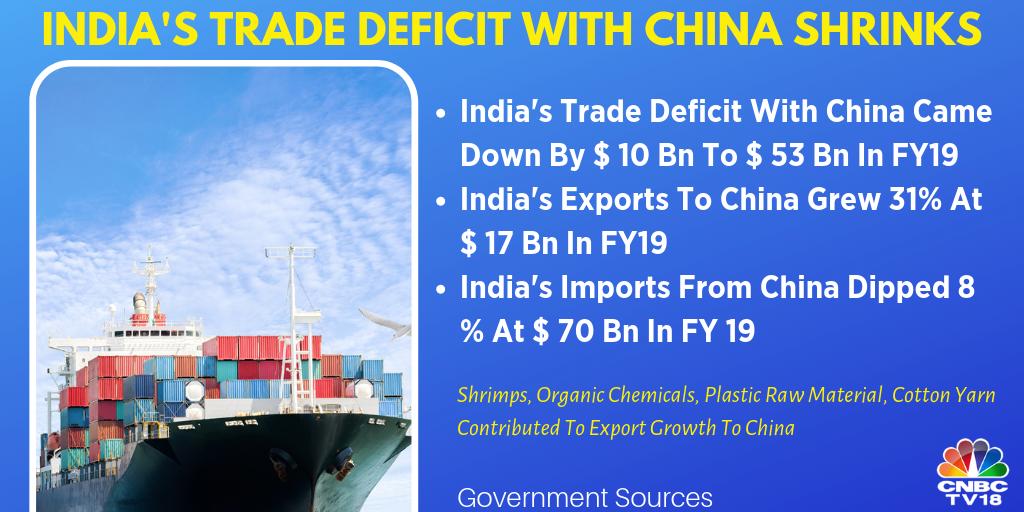
Article
India - On the Cusp of a Logistics Revolution

The performance of logistics sector in the economic development of India has never been more compelling. A robust logistics sector can go a long way in boosting India’s quest for being a manufacturing giant given that several initiatives like ‘Make in India’ have been launched by the government. Increasingly, companies across the globe are looking at the world as both a united production base and a market that a competitive logistics sector can successfully tap into. The industry has seen rapid growth in the last few years due to increased planned outlay of the government, improved infrastructure facilities and greater access to global markets. However, our services have not adequately capitalized on the opportunity in the global market as multiple challenges continue to mire the sector.
The effort in the years ahead is to build a more robust logistics network in the country. With better infrastructure planning, increased coordination among stakeholders and improved operational efficiencies, India aims to unlock the potential of the sector needed to fuel economic growth.
Challenges facing the Indian Logistics Sector
With globalization, logistics is expected to play an increasing role in driving the Indian economy. In 2016, India was ranked 35th in The World Bank LPI Index that ranks countries based on their logistics performance — moving up from 54th in 2014. While this is reflective of improvement in the sector, multiple challenges of infrastructural deficiency, lack of integration amongst stakeholders, lack of skilled manpower and slow adoption of technology continue to weigh it down.
- Infrastructure – It is one of the biggest hurdles that has cramped growth of the logistics sector. It gets reflected in inadequate and low-quality modal and terminal transport infrastructure, suboptimal modal mix, inefficient and ill-designed storage facilities for cargo and containers and inefficient operational and maintenance protocols, and poor adoption/adaptation of technology. This leads to high and inconsistent cargo transit time, inefficient use of resources and poor fleet management. The selection of the mode of transport, or even storage and terminal handling protocols are rarely linked to cargo characteristics (distance of travel, parcel size, density, etc.). As a result, there is overuse of high-cost modes like road at the expense of cost-effective and sustainable modes like inland waterways and railways. The continuing and prolonged suboptimal system, which erroneously appears to be in equilibrium, needs to be changed. The way to strengthen the Indian logistics infrastructure is about deconstructing the old and building a new rational equilibrium.

- Skill Development – India has a demographic advantage but the availability of appropriately skilled manpower remains a challenge. This is particularly so in the logistics sector as it is seen more as a support industry than a mainline one. Lack of skilled manpower is the result of inadequate training and proper leadership and support. The sector needs to specifically build a pool of personnel comprising truck drivers, seafarers, warehousing managers, quality inspection supervisors, among others. There are limited institutes for soft skills, and operational and technical training.
Also, due to the unorganized nature of the sector, which is characterized by poor working conditions and low pay scale, it is not a preferred choice among skilled personnel.
- Information Technology – Slow adoption of new technologies has been another big constraint. Awareness about the economic benefits of using digital technology is low and collaboration among stakeholders far from satisfactory. As a result, the logistics ecosystem is fraught with operational inefficiencies and poor asset utilization. Lack of technology systems and insufficient technical knowledge add to the pain. Technological infrastructure has remained inadequate, marked by slow network speeds, subpar performance, and unreliable hardware and software — all leading to high costs and underperformance.
- Regulatory Hurdles – The introduction of GST could change the contours of the logistics sector completely but such disruptive reform requires proper implementation. Multiple regulatory agencies, if not coordinated and brought under a single umbrella, could slow down the creation and operation of logistics infrastructure. Obstacles
in land acquisition and consolidation, and change in land use still continue to be major impediments. Lack of transparency in compliances further adds to the woes of the sector.
- Performance Standards – With a diverse customer base, consumer behaviours and expectations are also diverse. Both individual and corporate customers demand personalized services, flexibility and faster services. Due to these complexities and prevalence of fragmented suppliers, there is a need for integration of services in order to meet performance standards. There is a need for standardized services, transparency and compliance. Therefore, logistics service providers need to align their strategy with the business model and targeted customer segments. Additionally, initiatives such as real-time track-and-trace and other value-added services, will help service providers cut cost, raise productivity and optimize the supply chain.
It is clear that the Indian logistics sector faces challenges and there is a lot to act upon. Use of innovative models, new technological systems, international best practices, research and adequate implementation approach can all help to improve the sector, which in turn can stimulate growth and employment in the country.
Integrated end-to- end logistics – A shipment is a set of horizontal flows which together constitute the chain interspersed with links, and which involves multiple stakeholders with varying business models and consequent expectations from the chain. Integrated logistics is the seamless ow of cargo across the value chain involving multiple stakeholders with varying business models. It helps to accomplish the task most efficiently, thereby reducing the cost and time of movement.
Integrated Transport and Logistics Policy – A step in the right direction The Government of India is in the process of preparing an Integrated Transport and Logistics Policy that aims to transform India’s logistics from a ‘point-to-point’ to a ‘hub- and-spoke’ model, thus evolving centralized strategic networks for shipment distribution rather than relying on direct route operations that may not be efficient. As part of this initiative, the government plans to set up 50 economic corridors, 35 multimodal logistics parks (MMLP) at 15 locations, ten intermodal stations, among other things. While a policy is already being considered for integrated logistics to be successfully implemented, several elements need to be integrated with the horizontal ow across the chain – services, infrastructure and information.
Integration of service providers and services – An end–to-end service provider is one who performs or consolidates, on one platform, a full range of logistics services – transportation, storage/ warehousing and other value-added services – required for the cargo to move seamlessly from the origin to destination. The stakeholder groups involved in the ow of cargo on the other hand, are vertically integrated businesses targeted towards their own profit maximisation and/or other goals. Integration of service providers can be accomplished primarily through consolidation among existing stakeholders or the emergence of third- party service providers. Therefore, a complementary set of service providers could get together for mutual benefit, or one large logistics player could bring others from across the value chain into its fold.
Globally, the logistics market has undergone consolidation largely based on scale and operational efficiency. Partial service providers in the chain merge, acquire, and collaborate among themselves to provide comprehensive third-party logistics services at competitive pricing. In India too, service providers, who until recently were fragmented across domains, have begun to merge businesses. The objective of an integrated system is to better sync the vertical integration of individual businesses with the horizontal ow of the supply chain.
Emergence of third-party logistics service providers is an evolutionary process and is linked with economic development of the country. Indian firms are looking at new logistics capabilities and more complex solutions from third-party logistics service partners.
Another aspect of creation of end-to-end integration is the creation of performance standards for adherence that are achievable and acceptable to the diverse set of logistics service providers and other stakeholders.
Integration of Infrastructure (Multimodal transportation) – A prerequisite for service integration is the development of a robust multimodal infrastructure network that will enable the use of different modes of transportation to seamlessly transfer cargo. Such a transport network would ensure that freight is channelled through the most efficient mode for faster, safer, cost- effective and pollution-free movement. This would be driven primarily through the development of multimodal logistics parks, streamlined economic corridor routes for efficient freight movement, and intermodal stations to connect various transportation modes.
Transport modes in India, typically operate as isolated entities, with a skewed modal mix that relies heavily (about 60%) on the already congested road transportation2. The Indian coastline and river network has historically remained under-used, even though it is energy-efficient, eco-friendly and reduces logistics costs. Cost for coastal shipping is INR 0.15-0.2 per tonne km compared to INR 1.5 for railways and INR 2.5 for road. Addressing these anomalies alone provides a huge potential to lower logistics cost in the economy by INR 21,000-27,000 Cr by 2025.
The Eastern Dedicated Rail Freight Corridor (1,856 km) and Western Corridor (1,504 km) projects are under implementation. Once operational, they will strengthen India’s present rail infrastructure to carry freight many times over, possibly leading to a reduction in cost of transportation. The Government has also announced the Sagarmala Program which focuses on development along four thematic areas — port modernization & new port development, port connectivity, port led industrialization and coastal community development.
Large lumpy investment in logistics infrastructure with high gestation periods — for instance in rail track, port sub-structure, among others — should remain a state responsibility given that the private sector has not shown any appetite for it. The baton should shift through the penumbral area between the public and the private towards greater private investment through a range of appropriately structured models including PPP. In fact, more private sector participation will likely follow as the investment requirement increasingly shifts towards smaller and service- focused infrastructure. The logistics industry in comparison has a modest financing need; it mainly requires working capital funding. Therefore, it can get by without any, or minimal, state support.
To ensure seamless ow across physical infrastructure, intermodal transfers should be efficient. Terminal infrastructure, comprising multimodal logistics parks (MMLPs), inland container depots (ICDs), container freight stations (CFSs)/ private freight terminals (PFTs), ports, and airports should be designed with cargo specificity and operational requirements in mind. Such terminals lead to a break in the logistics chain and therefore impede the ow. Hence their presence in the chain is justified only when they either add value to the shipment or meet a regulatory requirement.
Multimodal infrastructure is often incorrectly assessed without considering the first and last mile. This can be the stumbling block in the end-to-end chain. Port and inland terminal/warehouse connectivity can be a part of the terminal plan, but the state needs to step in where land and other regulatory impediments arise. The location of terminals is its master key to success and its efficacy rests on good connectivity to the network.

Integrated Digital Platform – Another important aspect of integrated end-to-end logistics is digital integration. A single stakeholder visibility across the chain is generally limited to his own part, or sometimes to related domains too; but a complete end-to-end view is possible only through such a platform. For a stakeholder to become its inherent part, the benefits of such association must be clearly visible to him.
The objective of a common digital platform is to enable seamless ow of information across various service providers and modes of transport. Such a platform should ideally be able to integrate all documentation related to the cargo ow, provide cargo visibility through track-and-trace, facilitate a seamless information ow and link the chain to invoice and payment points. The state has to play a role in this whole process. It cannot just be an enabler of digitalization across the board, but it can also address potential pain points for various stakeholders and even promote awareness among the stakeholders.
Forward movement towards the fourth industrial revolution – Adoption of digital technologies
In the current era of digital transformation, several technological disruptions have come together to create powerful tools that are reshaping industries across the globe. As various industries, such as retail with close links to logistics, are being redefined by digital technology, it is inevitable for such disruption to also revolutionize the logistics sector.
Digital transformation has the potential to have far-reaching pay outs for a leaner and smarter logistics by ensuring smoother interface among logistics stakeholders
for seamless delivery. According to the World Economic Forum (2016)3, digital transformation of the logistics sector could translate into value of $1.5 trillion for players in the logistics sector and an additional $2.4 trillion worth of societal benefits by 2025.
Countries like Germany, Singapore, Hong Kong and USA, all of which possess more sophisticated logistics ecosystems have gone on to showcase how digital transformation has benefited them entire logistics value chain, including warehousing operations, freight transportation, and last-mile delivery. As a result, these countries have consistently ranked higher ranked than India in the World Bank’s Logistics Performance Index. Multiple digital technologies can potentially impact different activities across the entire logistics value chain to bring in operational efficiencies, maintain cargo safety, enhance customer interface, revamp business models and bring about rationalization of logistics costs. As is being witnessed across the globe, applying these digital technologies to logistics operations in the Indian context may help improve the performance and efficiency of the sector in the following ways:
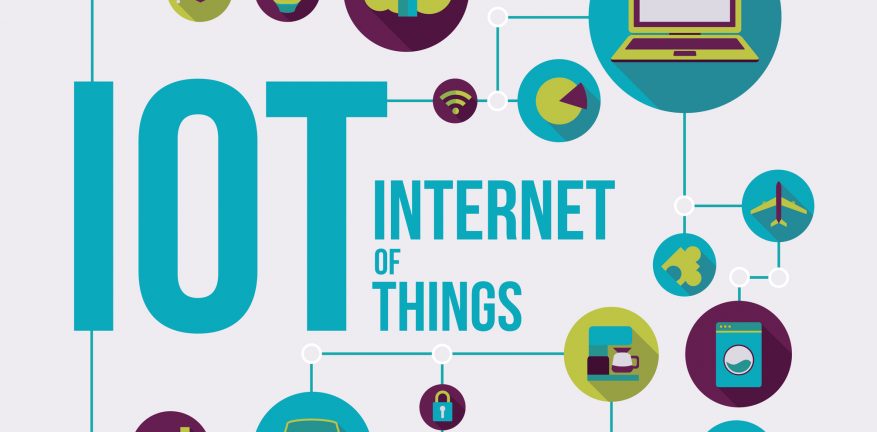
Internet of Things (IoT)
IoT is the networked connection of physical objects that can help capture information for generating new insights and adding value to business. It presents a unique technology transition and can enable the logistics ecosystem in India in the following ways:
- Predictive diagnosis and monitoring performance: IoT may be used to monitor the status of assets in real time throughout the value chain. In several countries, advanced sensors are being used to monitor and detect risks pertaining to breakdowns, helping avoid process delays and fatal accidents. For instance, Union Pacific, the largest railroad in the United States operating around 8,500 locomotives that haul freight over 32,100 route- miles of track in 23 states, uses IoT to predict equipment and component failures. Acoustic and visual sensors are embedded in the tracks to monitor the condition of train wheels. This has reduced bearing-related derailments that can result in costly delays and up to $40 million in damages per incident for Union Pacific (DHL and Cisco, 2015)4.
- Providing visibility for in-transit carriers: Additionally, IoT, which includes Global Positioning System (GPS) and Radio-frequency Identification (RFID) systems, is being used to provide logistics carriers with real-time information on key location stats. This has helped make the logistics ecosystem more responsive. While on the one hand this provides greater control to service providers to predict delivery times and improve asset utilization, it also enables customers to track and trace their consignment on a real-time basis.
Automation
Automation technology in the logistics sector allows the use of control systems for operating machinery, processes, vehicles, vessels, and aircraft through the use of artificial intelligence. From the use of robots to self-driven vehicle and drones, automation technology can be adopted in the logistics sector for:
- Reducing manual intervention to bring down costs: Artificial intelligence (AI) can help automate business processes to reduce/eliminate manual interventions for freight handling, to improve quality, speed up processes and subsequently bring down logistics costs. Almost two-thirds of the logistics costs are hidden, which is attributable to theft and pilferage of cargo, and holding of inventory. Therefore, automating processes may help in eliminating hidden costs, bringing down the overall high logistics cost in India. Additionally, reducing manual intervention may also help speed up inspection by regulatory agencies, ensuring minimum handling damage and reducing the inventory holding time.
Block chain Technology
It can be used to create common networks among entities unwilling to share information, without compromising on the integrity of the data. This technology becomes especially relevant in the Indian context, given the fragmented nature of the sector and lack of common platforms to exchange information. It may be used for:

- Synchronizing multi-party logistics value chain: Block chain technology can be used to align processes seamlessly from one point of the logistics value chain to another by eliminating the need for duplicity of documentation processes. This, in turn, would also reduce the risk of errors creeping into the system due to manual data entry at several points across the value chain. It would also act as a catalyst for achieving an integrated end-to- end logistics system. For instance, Belgium’s Port of Antwerp has initiated the process of using the block chain technology to streamline its terminal’s container operations. The aim is to pace up interactions between port customers, including carriers, terminals, freight forwarders, hauliers, drivers, shippers, among others, by cutting down on multiple interactions between these parties and also preventing data manipulation.
Cloud Computing
Cloud technology refers to the universal, and convenient access to a shared pool of networks, storage, servers and applications that can be accessed through the web. This technology can help the Indian logistics sector by:
- Optimizing asset utilization: As logistics in the country aims towards becoming leaner, optimizing asset utilization is important to enhance operational efficiency.
The Indian road transportation sector remains highly fragmented and often the vehicle fleet either lies idle or returns empty after transporting the freight. Cloud computing can help service providers use assets more efficiently by collaborating with each other to share fleets and networks. Sharing information on cloud-based platforms in real time can help service providers coordinate and collaborate for the pick- up and delivery of freight. This will not only reduce the idle time of their fleet but also make the delivery ecosystem more efficient.
Enabling storage and easy access of data: With cloud technology that enables the easy storage of vast amounts of data without the need for physical servers or hard drives, logistics service providers can easily access information from anywhere. This will give flexibility to service providers to exercise control over critical processes that require round-the-clock monitoring from anywhere.

Big Data Analytics
Big data analytics, another element of the digital revolution, enables number crunching and ‘sense-making’ of complex data sets that are captured through ‘smart’ devices and stored across servers and networks. It can be employed by various logistics players for:
- Driving future strategy: Analytics can be applied to the entire logistics value chain to identify improvement opportunities and achieve operational efficiencies in the country’s logistics framework. For instance, GE’s analytics platform, Predix, or Cisco’s Unified Computing System (UCS) Integrated Infrastructure for Big Data9 can be used to manage and implement complex statistical analysis, data mining, and retrieval processes for big data that help identify key insights and trends. This analysis can then be used to develop algorithms and estimate the remaining useful life of assets, identify areas of operational inefficiencies, eliminate redundant costs and drive future strategy.
An expanding digital consumer base coupled with inadequate and ill-planned infrastructure facilities has left India trapped between growing demand for logistics services on the one end and a fragmented logistics services market on the other. Already some experiments are being made for adopting digital technologies in the country. But given the potential for significantly higher value to be created for the Indian economy, the sector cannot bene t much until a concentrated and collaborative e ort is made by each stakeholder, including infrastructure providers, terminal operators, logistics service providers and technology companies.

Strategy to Implementation – A cohesive national logistics policy / blueprint
In order to make the Indian logistics sector globally competitive an all- encompassing solution is needed instead of a piecemeal approach. To achieve this, the state can put in place a comprehensive national logistics policy for a larger and holistic improvement in the sector. An integrated logistics policy has recently been announced, with a focus mainly on development of integrated transport infrastructure. A national logistics policy must go well beyond.
The national policy must incorporate key drivers for the sector namely integrated logistics, information technology, infrastructure, regulation, human resources and skill development and equally important the entire stakeholder community. The policy, among others things, should focus on: a) creating a vision for the logistics sector in the long term, b) formulating action steps for achieving this vision, c) creating a conducive environment for the growth of the logistics sector and should identify programs to address all aspects.
Source: Assocham


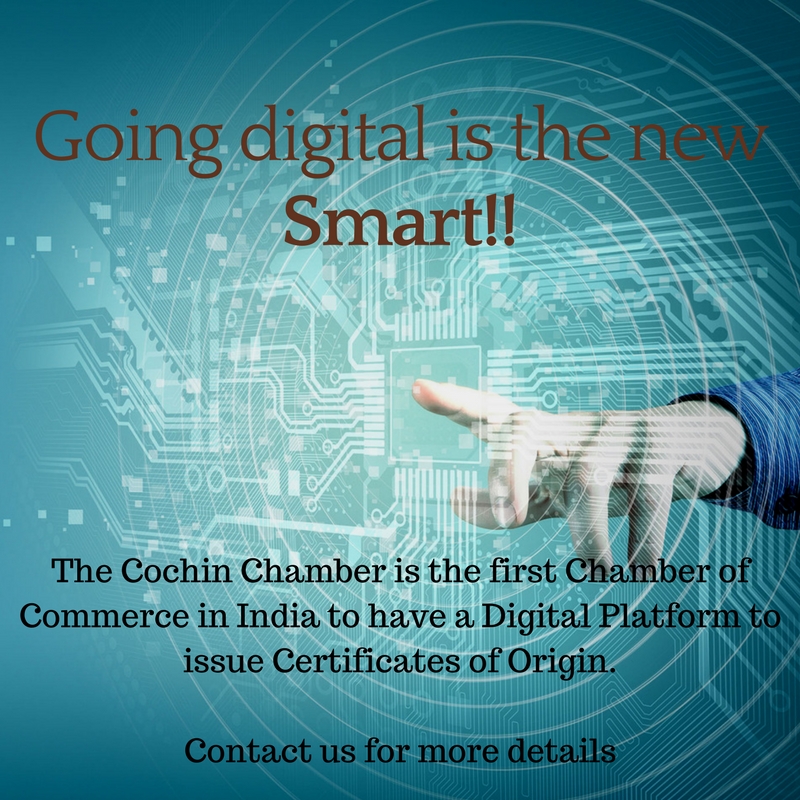
Chamber blogs

Click here to view Chamber Blogs
